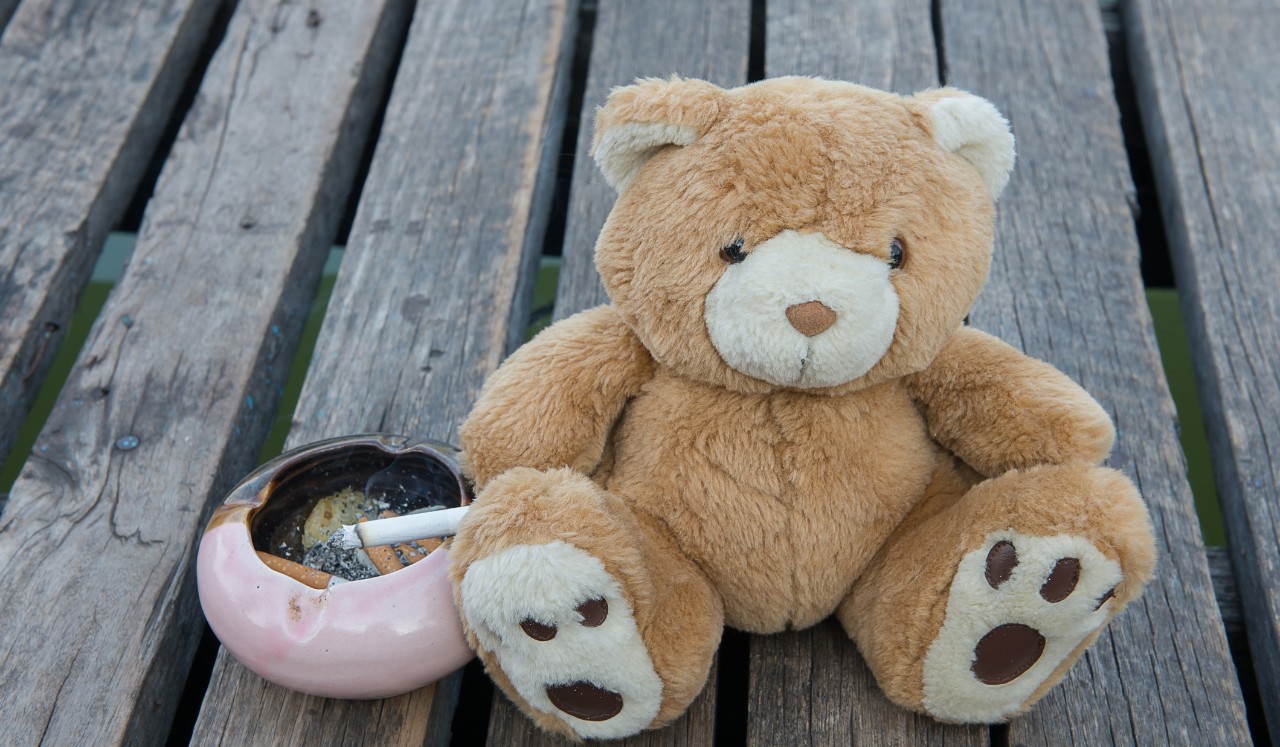
UC research links childhood trauma, tobacco exposure
Study finds adverse childhood experiences increase children's risk of exposure to smoke
A new study reveals a troubling connection between adverse childhood experiences and children’s exposure to tobacco smoke in their homes.
The study is led by University of Cincinnati researcher Ashley Merianos who specializes in tobacco use and its effects.

Ashley Merianos, PhD, is a professor of human services and tobacco researcher. Photo/UC Marketing + Brand/Andrew Higley.
The research, funded by the National Institutes of Health and now published in Child Protection and Practice, highlights that in the United States school-aged children facing trauma such as parental divorce, community violence or financial hardship are significantly more likely to live in households where tobacco is used — putting their health at further risk.
“Adverse childhood experiences [ACEs] and tobacco smoke exposure are two major independent problems faced by school-aged children in the U.S.,” notes Merianos, a professor in UC’s School of Human Services, within the College of Education, Criminal Justice, and Human Services, and Information Technology.
Merianos has spent over a decade researching the effects of tobacco use (including vaping) on public health — with an emphasis on childhood development.
Key findings:
As the number of ACEs increases, so does the likelihood of children living with tobacco users and being exposed to harmful smoke.
Both household-related trauma (like parental separation) and community-level adversity (such as witnessing neighborhood violence) correlate with increased exposure.
- Even children whose caregivers smoke exclusively outside the home are at risk, due to thirdhand smoke residue on clothing, furniture and surfaces.
“There is a common myth that children living with tobacco smokers who only smoke outside their homes are safe from tobacco smoke exposure and its negative health outcomes,” says Merianos.
Third-hand smoke
This study shows that ACEs increase the likelihood that children live with tobacco smokers who smoke only outdoors or are exposed to thirdhand smoke only, she says.
The findings also suggest that ACEs may be a root cause of exposure to thirdhand smoke — or both secondhand and thirdhand smoke — urging health and policy leaders to consider trauma-informed approaches to tobacco prevention and household health interventions.
Merianos is an affiliate member of the Thirdhand Smoke Research Consortium.
Thirdhand smoke is either inhaling, ingesting or absorbing through the skin the pollutants that are left behind in the environment after tobacco has been smoked. The pollutants can be found on walls, furniture and decorations.
Merianos recently led a study in collaboration with Cincinnati Children’s on the levels of thirdhand smoke in 80 homes where children reside. That study found nicotine on surfaces in all of the children's homes and detected the presence of a tobacco-specific carcinogen in nearly half of the homes.
In the current study, the authors call for targeted policies to address both ACEs and environmental tobacco exposure to protect vulnerable populations.
Learn more about Merianos' research at the UC website links below:
Are students vaping more? Educators think so
Study: Thirdhand smoke may harm children
Vaping while pregnant: What we know
Featured photo at top: Courtesy of iStock Photo/raybon0009
The next groundbreaking discovery
UC is a powerhouse of discovery and impact as a Carnegie 1 research institution. From pioneering medical research to transformative engineering and social innovation, our faculty and students drive progress that reaches across the world.
Related Stories
UC research links childhood trauma, tobacco exposure
August 7, 2025
A new study led by UC’s Ashley Merianos finds that adverse childhood experiences increase children's risk of secondhand and thirdhand smoke exposure — even when caregivers smoke outside. Merianos is a prolific tobacco-use researcher with an emphasis on the effects of using tobacco around children.
Study: Thirdhand smoke may harm children
January 8, 2024
UC tobacco researcher Ashley Merianos is looking more closely at thirdhand smoke, which is the presence of toxic tobacco by-products that remain on surfaces such as furniture, décor, walls and floors.
U.S. News & World Report: Smoking residue on household surfaces can harm kids
January 17, 2024
A new study by UC tobacco researcher Ashley Merianos was featured in U.S. News & World Report.The study measured the amount of nicotine and tobacco related toxins on surfaces in smoking households where children reside. The residue that remains on surfaces such as walls, tables, floors and decor is called thirdhand smoke.
